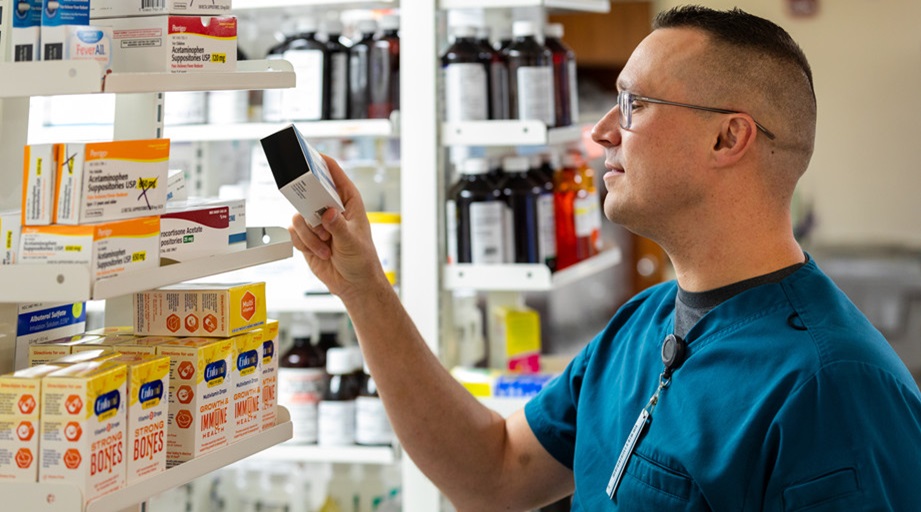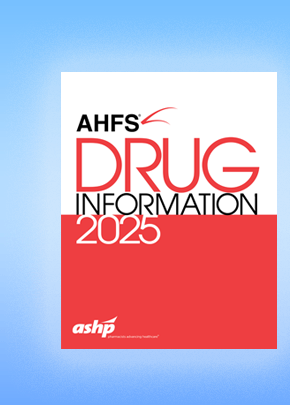
A robust system for capturing data on pharmacists’ interventions is helping Department of Veterans Affairs (VA) administrators find new ways to calculate the value of pharmacy services.
“There’s already plenty of evidence to show that pharmacists ... can save money by doing formulary management — and that they improve patient safety,” said Anthony P. Morreale, Associate Chief Consultant for Clinical Pharmacy Services and Policy for VA’s pharmacy benefits management service.
“What pharmacists can do to improve access to care is kind of a newer story,” Morreale said.
He said the emerging story treats pharmacists as “physician extenders” who can successfully manage the care of patients with chronic illnesses, leaving physicians more time to focus on patients’ acute needs.
To support that narrative, Morreale and colleagues are conducting pharmacoeconomic analyses using data from the Pharmacists Achieve Results with Medications Documentation (PhARMD) project.
PhARMD is a voluntary initiative through which pharmacists’ interventions are documented in VA’s electronic medical record (EMR) system and stored within VA’s corporate data warehouse for analysis.
Morreale said that thanks, in part, to data from PhARMD, “we can directly equate the workload the pharmacist does to the savings in workload that the physician would have had to do. We can show it’s much more economical to be bringing diabetes patients back 5 times a year to see a clinical pharmacist instead of a physician.”
Heather Ourth, National Program Manager for Clinical Pharmacy Practice Program and Outcomes assessment for VA’s pharmacy benefits management service, described PhARMD as a documentation tool that’s built into the progress note area of VA’s EMR system. Visually, the PhARMD template consists of a series of check boxes denoting medical conditions and specific interventions that the pharmacist selects during the patient encounter.
“When the clinical pharmacists are seeing patients in the clinics, they are able to do their documentation right there,” Ourth said. “It’s part of their normal workflow.”
Morreale, Ourth, and colleagues described PhARMD in a report published in the June 15, 2018, issue of AJHP. Throughout VA’s 2017 fiscal year, PhARMD users documented approximately 3.8 million interventions during 2.4 million encounters with nearly 600,000 unique patients, according to the report.
When the fiscal year ended in October 2017, the PhARMD template was in use by 4,728 clinical pharmacy specialists managing 27 disease states at 140 VA facilities. Most of the interventions — 1.1 million — involved anticoagulation management, followed by approximately 700,000 interventions for patients with type 2 diabetes.
PhARMD has grown since the publication of the report.
During the 2018 fiscal year, Ourth said, “we had over 5.4 million interventions logged by pharmacists” through the PhARMD template.
She said VA added 18 new disease states and 130 associated intervention types to the template last summer. The updates largely reflected requests from acute care pharmacists and pharmacists specializing in mental health who wanted to record interventions for patients with substance use disorders.
“We had received feedback from pharmacists around the country that were for areas they were working in, and they wanted to be able to capture their interventions,” she said.
Ourth said another update to PhARMD is underway for rollout this summer.
Morreale said PhARMD data have provided important insights on how VA’s clinical pharmacy specialist workforce is growing and where their efforts are directed.
“Our primary disease states continue to be in diabetes and hyperlipidemia and hypertension management,” Morreale said. “That’s not a big surprise. But over time, we’re seeing shifts in the types of interventions and the workflow ... toward things like pain management and mental health disorders.”
He said those shifts indicate the success of VA’s efforts to expand the pharmacy workforce in those areas.
Local VA facilities can use PhARMD data about their pharmacists’ interventions to better understand where staff efforts are focused and to identify areas where additional resources may be needed, Morreale said.
“You can also start to be able to look at why you may have high and low producers in terms of interventions,” and whether training or workflow changes may be needed to improve productivity, he said.
Also available to local facilities are pharmacoeconomic models for diabetes, hypertension, and hyperlipidemia. With those models, Ourth said, VA facilities can use their own PhARMD data to run reports on the costs and benefits of pharmacy interventions to justify an expansion of clinical pharmacy services.
Morreale said that as PhARMD evolves, the data it collects become more robust and suitable for new uses, such as bolstering the case to have pharmacists classified as healthcare providers at the state and national levels.
He said disciplines outside of pharmacy have expressed interest in developing intervention-capture systems modeled after PhARMD.
[This news story appears in the April 15, 2019, issue of AJHP.]








